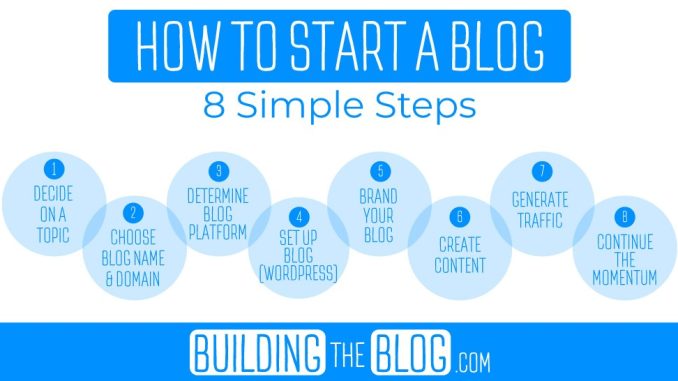
Building a personal blog has become one of the most accessible and rewarding ways to share your ideas, showcase your expertise, or simply express yourself online. Whether you want to chronicle your travels, discuss your favorite books, or even build a professional portfolio, a personal blog provides a unique platform for creativity and connection. Yet, for many, the idea of starting a blog can feel daunting — the technical setup, the design choices, the content planning. However, creating your own blog doesn’t have to be complicated. With a thoughtful approach and some guidance, anyone can bring their vision to life step by step.
The journey of building a personal blog begins with clarity about your purpose and audience. What do you want to communicate, and who do you hope will read your posts? Defining these early on will shape many decisions down the line — from the tone of your writing to the design of your site. For example, a blog aimed at sharing personal stories might be warm and casual, while a professional blog focused on industry insights could lean toward a more polished and formal style. Taking the time to reflect on this foundation helps ensure that your blog feels authentic and resonates with readers.
Once you understand your blog’s purpose, the next phase is choosing the platform on which to build it. There are many options available, each with its own strengths and trade-offs. Popular content management systems like WordPress offer tremendous flexibility, allowing you to customize your blog extensively, from themes to plugins. Alternatively, simpler platforms like Wix or Squarespace provide user-friendly interfaces with drag-and-drop functionality, making them excellent choices for beginners who want to get online quickly without wrestling with code. Your choice depends largely on your comfort with technology and how much control you want over the design and functionality.
After selecting a platform, securing a domain name and hosting service is a crucial step. The domain name is your blog’s web address — the URL visitors will type in to find you. Ideally, it should be memorable, easy to spell, and reflective of your blog’s theme or your personal brand. Hosting, meanwhile, is the service that stores your blog’s files and makes them accessible online. Many platforms, like Wix or WordPress.com, include hosting in their packages, simplifying the process for new bloggers. However, if you opt for a self-hosted WordPress.org site, you’ll need to purchase hosting separately from providers such as Bluehost or SiteGround. The investment here is generally modest but vital to ensuring your blog runs smoothly and reliably.
Design and user experience come next in the process of building your blog. Your site’s appearance sets the tone for visitors and influences how easy it is for them to navigate your content. Many blogging platforms offer a variety of themes — pre-designed templates you can customize to suit your style. Choosing a clean, responsive theme that looks good on both desktops and mobile devices is essential. You want your readers to feel comfortable browsing your posts, whether they’re on a laptop or a smartphone. Beyond aesthetics, consider the structure of your blog: clear menus, intuitive categories, and a search function all enhance usability and keep readers engaged.
With your blog’s skeleton in place, attention turns to creating compelling content. Writing blog posts that are engaging, informative, and consistent is what will ultimately attract and retain readers. It’s important to find your own voice — writing in a way that feels natural and true to you. Regular posting builds momentum, whether you publish weekly, biweekly, or monthly. You might find it helpful to plan your posts ahead of time, brainstorming topics and creating a content calendar to stay organized. The goal is to create a space where your ideas shine and your readers find value, sparking conversations and connections.
Promotion is another vital component that often gets overlooked by new bloggers. Simply publishing content isn’t enough to draw an audience in today’s crowded online landscape. Sharing your posts on social media platforms, engaging in relevant online communities, or even collaborating with other bloggers can significantly boost your reach. Consider how you can leverage your existing networks, whether through LinkedIn for professional topics or Instagram for lifestyle and visual storytelling. Over time, as you build credibility and consistency, organic traffic and loyal followers tend to grow naturally.
Behind the scenes, maintaining your blog requires some ongoing effort. Keeping your platform, plugins, and themes updated is essential to protect against security vulnerabilities and ensure smooth functionality. Monitoring your site’s performance with analytics tools helps you understand which content resonates most and how visitors interact with your blog. This insight can inform your future posts and design tweaks, helping your blog evolve alongside your goals and audience needs.
Throughout this process, it’s important to remember that building a personal blog is not just a technical task but a creative journey. Each decision, from the domain name to the post topics, contributes to the unique identity you craft online. It’s a space that reflects your passions, expertise, and personality, and it can grow and change with you. Many successful bloggers started small, learning and adapting as they went along, often discovering new opportunities and communities along the way.
In conclusion, creating a personal blog is a rewarding venture that blends technology, creativity, and communication. By clarifying your purpose, choosing the right platform, securing a domain and hosting, designing with your audience in mind, and consistently producing engaging content, you can build a blog that feels authentic and professional. With patience and persistence, your blog can become a powerful tool to share your voice, connect with like-minded readers, and even open doors to new opportunities. Whether you’re writing for personal fulfillment or professional growth, the step-by-step journey of building a blog is well worth the effort.